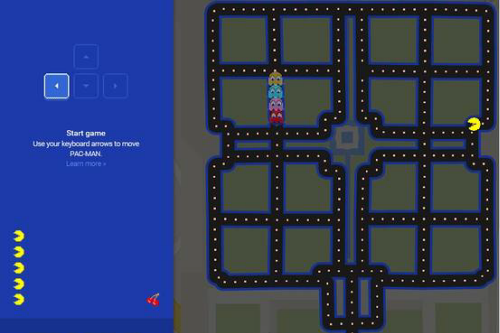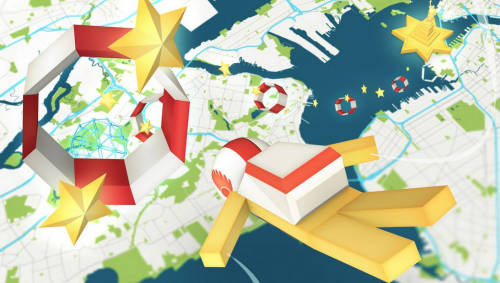 PAC-MAN Google Maps at Taj Mahal, India
PAC-MAN Google Maps at Taj Mahal, India
Take a classic map and combine it with arguably the world’s most loved video arcade game PAC-MAN. Genius! We’ve highlighted the importance and design credentials of Google Maps in MapCarte already (MapCarte 116) but the ability of Google to take their platform and come up with imaginative ways for us to engage with maps knows no end. Of course, they’re no strangers to using their map as a basis for a game as their Cube game demonstrated in 2012 (MapCarte 90)
You navigate the maze of streets as PAC-MAN, consuming pac dots and other bonus items while avoiding Blinky, Inky, Pinky and Clyde. The bonus items include the typical fruit icons from the original game but added are a Google Maps marker and Peg Man – nice touches. The game play is superb and very faithful to the original as you use cursor keys to move PAC-MAN around. They’ve even managed to get it working nicely on mobile devices using swipe gestures.
The re-styling of streets from Google Maps into the PAC-MAN maze is also faithful to the original with the dark background and neon blue maze structure being applied to street casings. It’s wuite simply a lovely re-imagination of the game and a fun way to repurpose the map to provide an entertainment medium.
Sadly, the game appears to be a temporary fixture for Google Maps but in marrying these two design greats they’ve proven that maps really can afford a template for all manner of purposes.
This video from C:NET illustrates the gameplay
Instructions to play Google Maps PAC-MAN are here.

